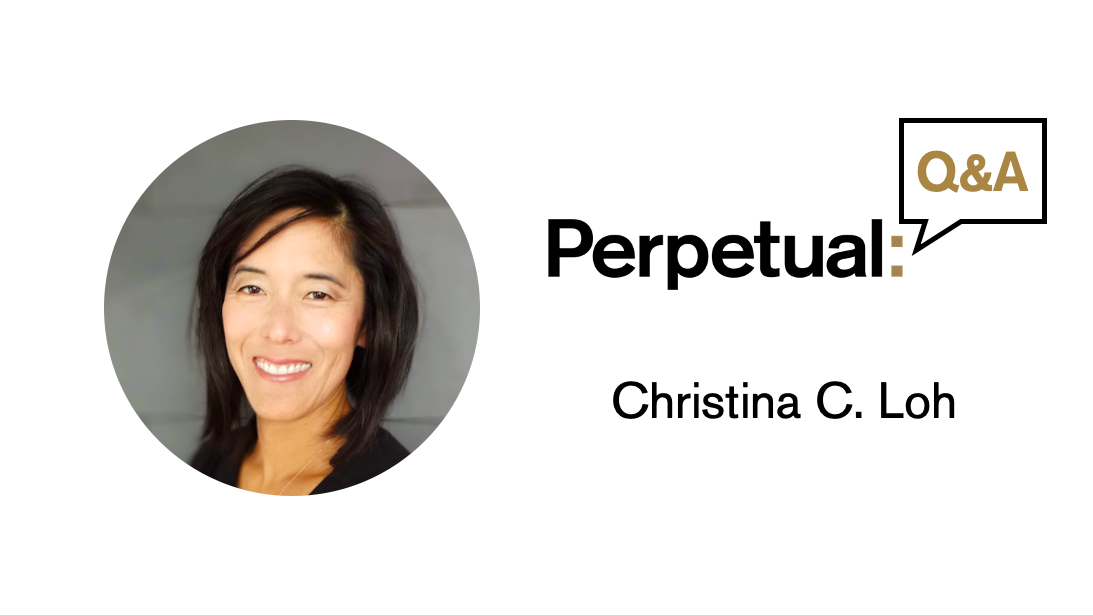1) How do you create a high performing team using genuine or authentic leadership?
High performing teams are teams with PURPOSE and TRUST. Truly high performing teams don’t need a principal leader; each team member leads within their area of expertise or capability. A “leader” can help inspire and focus the group on a shared PURPOSE. Authentic leadership understands that every team member has their own unique perspective and broadens individual thinking to align the team. At one startup, I took over a team with individuals from Google, Apple and Amazon. Each was an expert in their area but had an entirely different perspective on how to work as a team. The Googlers expected open-ended collaboration, the Apple folks were all about defining the “DRI”(Direct Responsible Individual) and the Amazonians were accustomed to team members having a cogent plan to discuss. To make matters worse, they were also intimidated by each other’s pedigrees and were afraid to ask clarifying questions for fear of appearing stupid. Here was a situation where highly capable and intelligent individuals were completely frustrated with one another and progress was paralyzed. My value was to establish the team view-point that there was no stupid question and to recognize each comes from a different culture – so don’t be offended if you are questioned in a way that rubs you the wrong way. Focus on the intent of the question vs. the delivery and drive action towards the goal.
For me, the TRUST attribute of high performing teams covers:
- Communication – You are going to tell me what you need
- Integrity – You will do what you say you are going to do
- Capability – You have the skills to do your job
A “leader” supports an environment of trust, and there are plenty of books and articles on how to do this. Once you have the basics established, I think the most critical role of a “leader” is to coach, and as needed, to remove team members that are not able to step up to the trust standards of the team. At a turn-around I joined, one of the problems was that underperforming team members were being passed from group to group – one person was passed across 4 different roles in less than 18 months! The company was rife with people who were not up to standard, often doing work others found confounding. It created an atmosphere of “total crap is OK”. An authentic leader knows that eliminating someone’s livelihood is one of the most impactful decisions they make. Therefore, their priority is team success while respecting the individual. In these situations, I make sure there are clear expectations, my leaders are addressing skill gaps where possible, and we assess if the person has strengths that are a better fit in an available role (don’t expect a fish to climb a tree). There are only three acceptable outcomes, the individual becomes a valued team member, the individual self-selects out, or we let them go with resources to get them back on their feet. Leadership in these situations requires hard work, compassion and courage.
2) Thinking about authenticity, showing that you’re connecting in the moment is huge. Knowing many leaders, particularly in the tech industry feel compelled to always be on and tied to their phones, what’s your personal philosophy on being available via email and mobile? What do you expect of your team and/or peer group?
In any endeavor, whether you are leading a multi-billion dollar organization, rebuilding an engine or cleaning a bathroom, focus and clear thinking results in great work. I’m very clear when I introduce myself to a new team that our focus is everyday bringing our greatest version of leadership and every moment should be spent supporting the organization’s trajectory. Very rarely does that mean that we should be consumed with email every waking hour and sitting in bad meetings responding to email.
I set the expectation with my boss and teams that I read every single email that comes to me and will respond within 24 hrs, worse case 72hrs if I’m traveling internationally. Typically I only check email twice a day. I block time at the beginning and end of every day. If they have an urgent issue that needs my attention, call or text me. I am available 24/7 via that channel. Also, I do not check email, or expect them to check email after standard working hours, weekends or on vacation. This doesn’t mean that I or they don’t work during those times. When we need to get things done, we need to do what it takes and work when and how is best for us. When I am working during non-standard times, I don’t expect them to respond to my email. If I need them, I will text and/or call their cell. One time, I had a staff member tell me that he was afraid to show his wife my policy, as then he would have to pay attention to her. I can only guess that there are others who use work as a reason as to why other aspects of their life are not going well. I highly recommend, Getting Things Done, by David Allan for anyone who feels overwhelmed. Limiting my “connectedness” gives me headspace. Some of my best insights about work come when I’m not working on work. With a clear head and focus, I’m able to weave the bits of information coming at me all day to identify risks, opportunities, create a strategy and initiate the right action.
As an executive, my time is best used collecting information, thinking and guiding. I know I’m on task when the majority of my week is spent in meetings with gaps for thinking/planning/following-up. In meetings, I’m an Ogre about no laptops unless you are presenting or note-taking. It is scientifically proven that multitasking is a myth. Meetings are for creating, clarifying, debating, decision making, and requesting action – if you are checking email throughout a meeting either you are not needed in the meeting or the person running the meeting should not be running the meeting. Have better meetings. If a meeting is wasting your time, speak up, give constructive feedback. Time is the most valuable asset you have. If you do not make your priorities your priority, others will quickly make their priorities/incompetence your priority.
3) What feedback about your leadership style has followed you throughout the years and how do you challenge yourself to grow over your career?
For the first decade or so the consistent feedback I received was “I’m intimidating”. I was valued for my intellect and drive, but only other A type, analytical thinkers enjoyed working with me. Luckily I had many great (and a great many) managers giving me feedback. I put a lot of effort into learning about personality types and tailoring different communication techniques, etc. That got me pretty far. During the next decade or so, the feedback changed to “I’m intense”. It was definitely an improvement, but “intense” is just a nicer way of saying “you are intimidating but you bring enough value to tolerate it”. The two things that made a difference: being vulnerable and developing empathy.
Having started my career in the Big 5, there was an overemphasis on “professionalism”, primarily because when you recruit talent right out of college the first few weeks on the job are peppered with unprofessional incidences. Because I was a wild rock climber, surfer, cowgirl, raver at heart, I embraced the “Be Professional” guidance as the Holy Grail to becoming Partner and getting the Rolex. I made it to Associate Partner by being the professional, buttoned-up, leave my personality at home, robot. I look back and feel sorry for the teams that I lead. We got the job done, but WOW was it a boring slog. My professional self and personal self were so dramatically different I remember running into co-workers outside of work and some of them couldn’t place me as a team member on their project. It wasn’t until I had the benefit of working with this VP of Product, Stephane Maes, who had a weekly 2-hour Friday afternoon meeting to review product roadmap status. It had all the trappings for an awful meeting – 2 hours on a Friday afternoon, for real? But, it was my favorite meeting. I looked forward to that meeting every week. That meeting literally changed the professional lives for all the teams I have led since then. He was wild. He was fun. He was smart. We were laughing and joking throughout what could have been a very long and dry review of how we were or were not making schedule. Stephane brought his personality to work and loved to have fun while building great product. He taught me that it is ok for me to bring more of myself and that humor softens intensity. Looking back, Stephane taught me what Brene Brown teaches in Daring Greatly.
However, being fun is not enough. Being a fun yet intense leader is like being Batman: The Ride at Six-Flags. The “becoming empathetic” is what really has made the biggest difference in my leadership. A few years back our leadership team took the CALIPER assessment. For Empathy, I scored 3 out of 100. I made it to the executive level without a shred of caring because of high scores in listening and accommodation. If you could express what you wanted, I wanted to help you, and things worked out. If I didn’t understand what you wanted, so sad too bad. How you might feel about it = zero importance to me. However, it is true, you can develop empathy. It starts with being self-empathetic. Once you are able to recognize, accept and be nice to yourself when you are feeling angry, sad, envy and any of the 7 things from that Brad Pitt movie – you magically anticipate and/or recognize what others are feeling. Another tool to help develop empathy is meditation. 5-10 minutes of quieting your mind daily is brain exercise for your mental self to give space for your emotional self. Being empathetic helps me understand what people need in order to move forward. We are more than just physical and mental beings and when a leader is able to address the needs of the whole person the game changes.
How do I challenge myself? I’m lucky as naturally I hate being bored and I have a lot of initiative. I’m either pursuing something new that is interesting to me or I’m working on something that needs to be worked on. I know that wherever I’m feeling discomfort, there is an opportunity for growth. It is like weight lifting, get to muscle failure and give yourself time to recuperate, then growth occurs. If you are naturally complacent then do something that is either novel or makes you slightly uncomfortable weekly. Just a “tasting bite” – because you might never know what you encounter that brings more joy to your life.
4) How do you look to assess one’s high-performance capability with candidates using your genuine and direct approach during the interview process?
Interviewing is unfortunately flawed. There are people who just can’t verbally communicate their talent and others who are great at telling you what you want to hear, or better yet, let you do all the talking. But, for lack of a better means of assessing the unknown, there are three questions I explore to at least try to assess if they are right for the organization.
The first is “Tell me about something significant that you learned this last 12 months.” This gives me an indication if they are curious or complacent. One of my favorite hires was a woman who learned to replace a toilet on YouTube. If the candidate hasn’t learned anything significant in the last 12 months and you are seeking an A-player, pass.
The second question is, “Provide a specific example of where you disagreed with someone (team/boss) and what was the outcome.” Make sure you get them to tell you about a specific situation. It is easy for someone to communicate what they know you want to hear when speaking in generalizations. I’ve dodged a few bullets with candidates that told me they either got so pissed off they ended up creating a chasm in the team or they just rolled over when their valid point-of-view was shot down.
Finally, if the candidate passes the first two, I assess their fit for the role. Before the interview, the hiring manager and I identify the 3 non-negotiable criteria for the job and I listen for these throughout the interview. For the third question, I’ll ask a question directly related to a problem we are having in that area to 1) see if they can independently solve the problem, 2) they have a solution we haven’t thought of, 3) provide opportunity for the 3 non-negotiable criteria to make an appearance if they have not done so already. For example, if we are hiring for a New Product Launch Planner Buyer – non-negotiable criteria would be Passionate about Data, On the Ball, Decisive. My question might be “It is still undecided if the touch screen will be OLED or LCD. To make launch, we are within ordering lead time for OLED. Tell me about an example of where you faced a similar situation and what did you do?”. Hopefully I hear examples of the non-negotiable criteria such as, they turned numbers into stories, their peers sought them out for guidance, or they took control of complex situations where time was of the essence.
Regardless of what questions you like to ask, I have found that the entire process is critical. Have at least 3 candidates to compare. Be selective with who is interviewing the candidate. Select interviewers based on their hit rate for great hires and include employees who have qualities that you want more of, as like attracts like. Finally, throughout the entire interviewing process observe the candidate’s actions. Don’t get dazzled, with keen observation you can follow Maya Angelou’s sage advice, “When someone shows you who they are, believe them”.
About Christina C. Loh – LinkedIn
Christina C. Loh is a COO & Executive with 20+ years of experience building and leading teams at startups and Fortune 50 companies. She is highly versatile and brings a unique blend of entrepreneurial initiative and ability to successfully develop and advance complex organizations and markets.
A technology operations leader with a proven record of bringing advanced technology products to market—mobile phones, tablets, home, LED and enterprise software solutions—quickly grasps opportunities, developing customer and operational strategies to create brand value and customer loyalty.
Christina is a strategic execution driver who delivers results regardless if a business is at an incubation or a mature stage. Adept at forming, transforming and/or merging existing businesses, leading global teams and launching products and services globally. Combines over a decade of world-class Management Consulting experience in strategic planning, human capital development and complex solution delivery with real-world experience and deep personal commitment.
If you’d like to learn more about working with Christina, please contact Elizabeth Lee – elizabeth@beperpetual.com.










